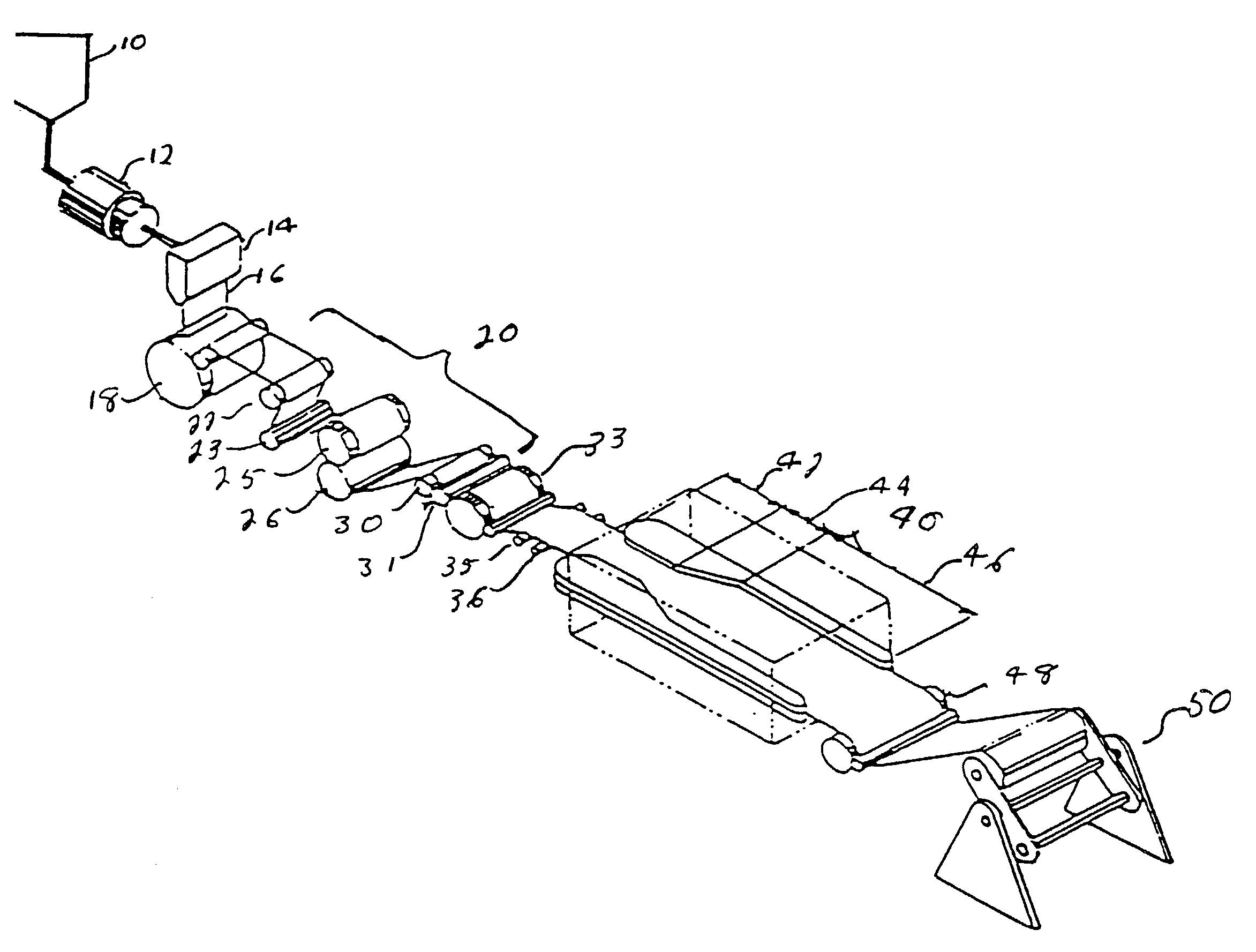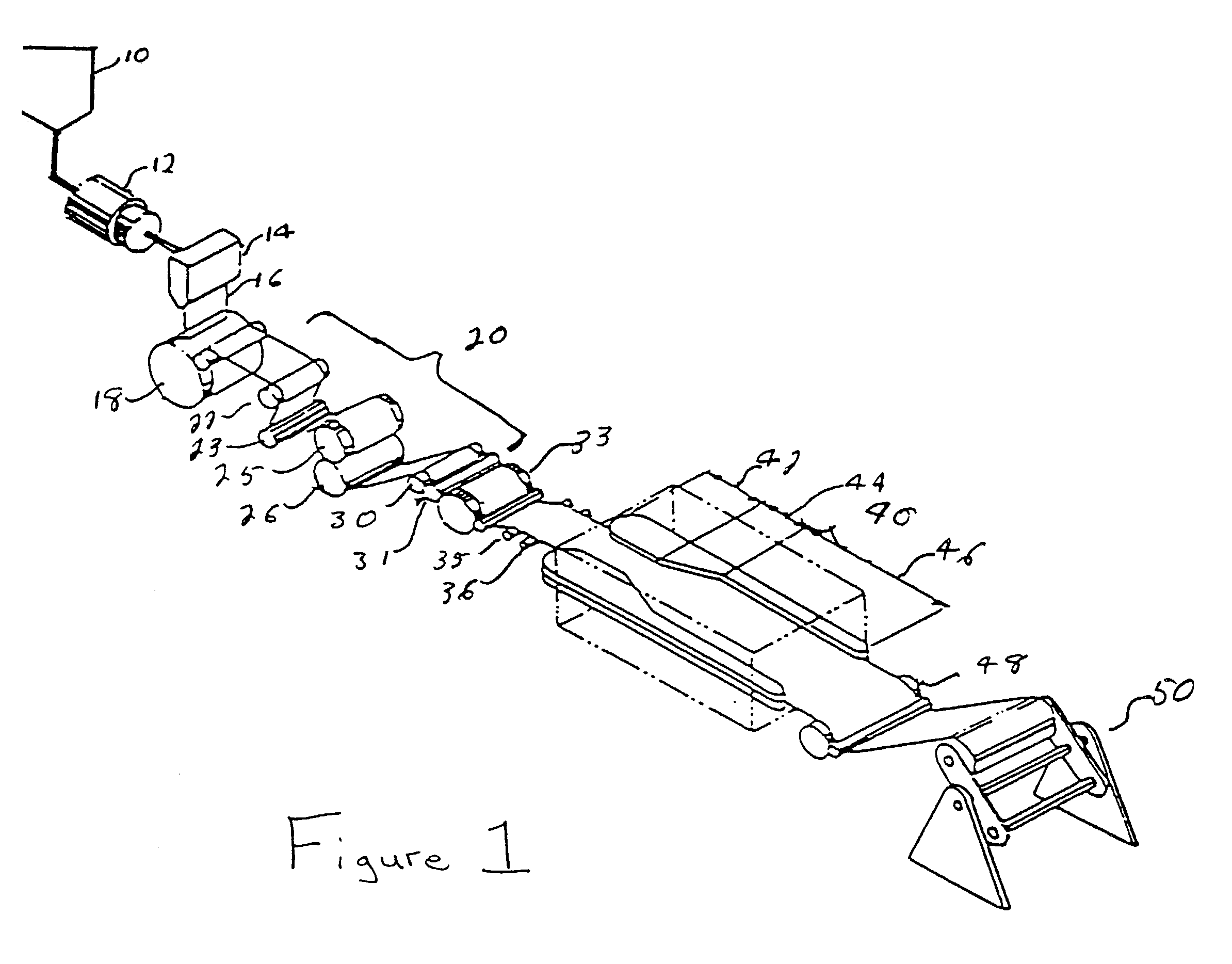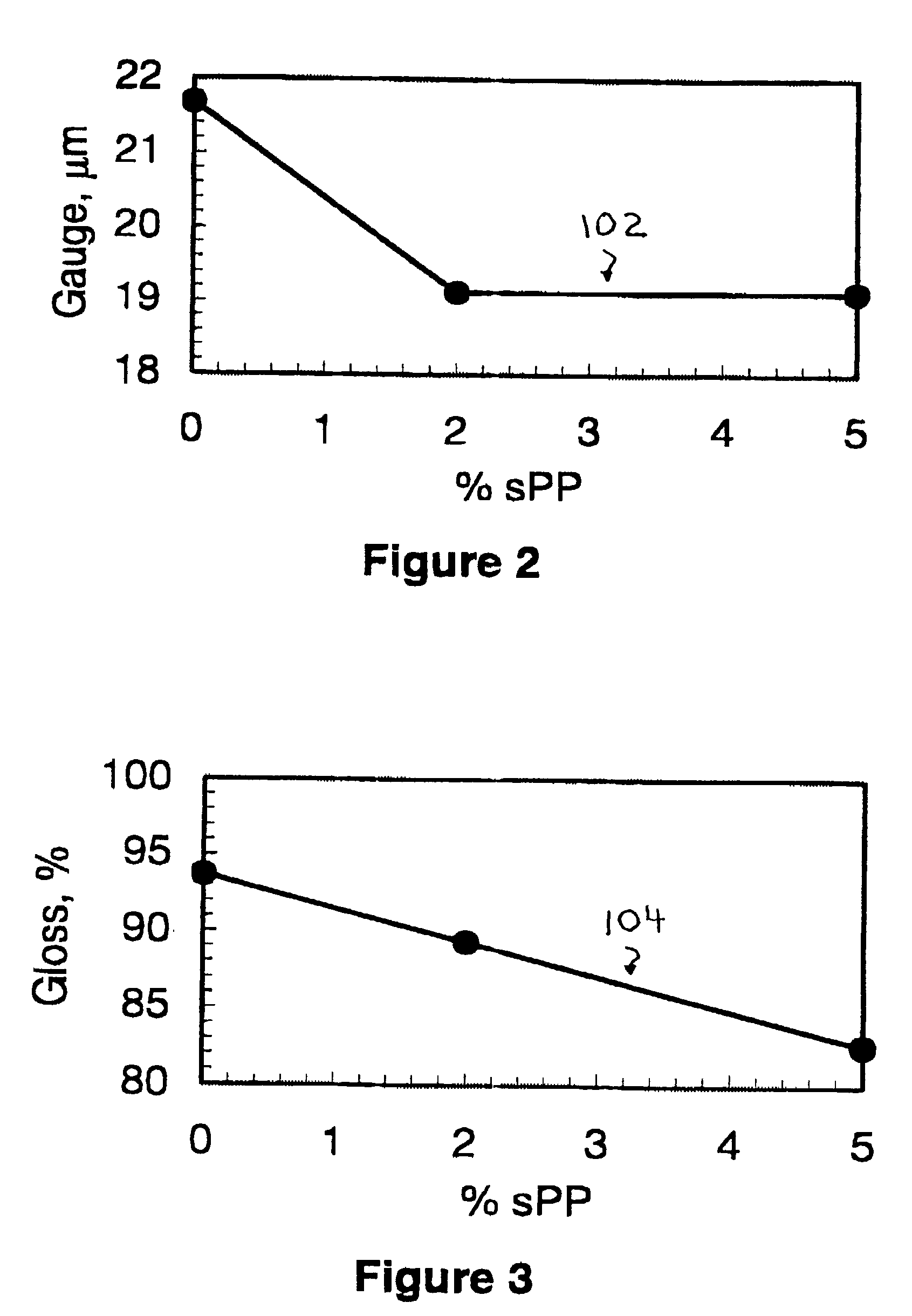Metal bond strength in polypropylene films
a technology of polypropylene and metal bonding, applied in the direction of transportation and packaging, synthetic resin layered products, chemistry apparatus and processes, etc., can solve problems such as metal coating damag
- Summary
- Abstract
- Description
- Claims
- Application Information
AI Technical Summary
Benefits of technology
Problems solved by technology
Method used
Image
Examples
example 1
[0038]Several resins with varying amounts of primarily syndiotactic polypropylene (referred to simply hereinafter as syndiotactic polypropylene or “sPP”) blended with primarily isotactic polypropylene (referred to simply hereinafter as isotactic polypropylene or “iPP”) were processed through a biaxially-oriented polypropylene film making process using a tenter frame system and the resulting properties then measured. The isotactic polypropylene was polymerized separately from the syndiotactic polypropylene, and the resulting polymer fluffs blended in a separate compounding step in the pelletizing process.
[0039]The trial was conducted in a sixty inch continuous pilot tenter line. The line was capable of 76.2 meter per minute output and two sided corona discharge treatment. Biaxial orientation of flat films was carried out in two sequential steps. The casted sheet chilled on a rotating cold steel roll was first stretched longitudinally (in the machine direction or “MD”) in the tangenti...
example 2
[0045]Another set of biaxially-oriented polypropylene films were formed and oriented using methods identical to those of the Example 1. This set, however, was not metallized, but was instead tested for both its optical and physical properties as a monolayer BOPP film. FIGS. 2–8 reflect the results of various optical and physical tests performed on the unmetallized films which were corona treated at 52–56 dynes / cm. In each of FIGS. 2–8, the measured parameter as described below is plotted on the ordinate versus the weight percent of sPP present in the sample which is plotted on the abscissa. In FIG. 2, curve 102 illustrates the relationship between the gauge, measured in microns, and weight percent of sPP. In FIG. 3, curve 104 illustrates the relationship between gloss, measured in percent, and weight percent of sPP. In FIG. 4, curve 106 illustrates the relationship between haze, measured in percent, and weight percent of sPP. In FIG. 5, curve 108 illustrates the relationship between...
PUM
| Property | Measurement | Unit |
|---|---|---|
| thickness | aaaaa | aaaaa |
| thickness | aaaaa | aaaaa |
| weight percent | aaaaa | aaaaa |
Abstract
Description
Claims
Application Information
 Login to View More
Login to View More - R&D
- Intellectual Property
- Life Sciences
- Materials
- Tech Scout
- Unparalleled Data Quality
- Higher Quality Content
- 60% Fewer Hallucinations
Browse by: Latest US Patents, China's latest patents, Technical Efficacy Thesaurus, Application Domain, Technology Topic, Popular Technical Reports.
© 2025 PatSnap. All rights reserved.Legal|Privacy policy|Modern Slavery Act Transparency Statement|Sitemap|About US| Contact US: help@patsnap.com



